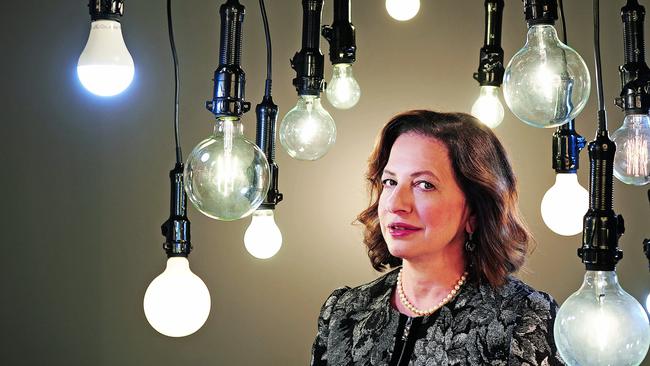Generators in reserve and extra solar to help in summer, says Australian Energy Market Operator
This summer is looking better for power supply because of extra solar power and generators being held back in reserve, the electricity market operator says. But risks remain as ageing coal plants struggle in the heat.

SA News
Don't miss out on the headlines from SA News. Followed categories will be added to My News.
Summer power supply has been boosted with reserve generators locked in to avoid blackouts during peak hot weather.
A considerable increase in rooftop and grid-scale solar would also put the electricity market in a better position than last summer, the Australian Energy Market Operator says in its Summer Readiness report published on Wednesday.
Nonetheless, risks of blackouts remain particularly because key Victorian coal and gas plants have yet to be fixed.
The reserve generation would cost about $44 million nationally if conditions are similar to January this year when Victoria had rolling blackouts and South Australia was pushed to the limit and needed the government-owned generators to power up.
SA and NSW will be in a better position than Victoria but AEMO cautioned that “there remains a potential for the loss of consumer load”.
“In any region, the actual occurrence of load shedding could be higher than forecast, and potentially significantly exceed the reliability standard, given particular combinations of weather events, plant outages, or bushfires,” the AEMO report said.
Since last summer, 3700MW of generation — more than seven times the capacity of the now demolished Northern Power Station in Port Augusta — has been added to the electricity market. Some 90 per cent of the new generation is rooftop and grid-scale solar.

AEMO managing director Audrey Zibelman said “whilst unexpected events can and do happen, particularly when the power system is under significant pressure and most prone to failure, AEMO has worked diligently to prepare the power system appropriately, including the procurement of emergency resources”.
AEMO also has arranged for some companies to be prepared to shift or cut their energy usage when called on, to reduce overall demand.
The operator relies on forecasting by the Bureau of Meteorology which expects both warmer than average and extreme temperatures this summer, with short, sharp heatwaves early in the season.
“These risks add to the deteriorating reliability of some of the older coal generation plants,” Ms Zibelman said.
The bureau also expects increased bushfire risks because of the prolonged dry conditions.
Federal Energy and Emissions Reduction Minister Angus Taylor acknowledged the report which comes after the nation’s energy ministers meeting late last month as the COAG Energy Council decided to review reliability standards.
“The plan tasked the Energy Security Board to review the reliability standard which will ensure that there is affordable, and reliable energy for Australian business and households into the future,” Mr Taylor said.
Opposition spokesman for energy and climate change Mark Butler said not enough was being done to avoid rising prices and faltering reliability.
“For six years this Government has had no plan to support the clean energy investment needed to replace ageing and increasingly unreliable coal-fired power stations,” Mr Butler said.
Ms Zibelman said establishing significant reserves — 125MW off-market generation and demand response plus 1500MW of short and medium-term notice reserve — was a “necessary and cost-effective insurance policy for the reliable operations of the system”.
In Victoria, a Loy Yang coal plant unit and Mortlake gas plant have broken down. Both are due to be fixed for summer.
